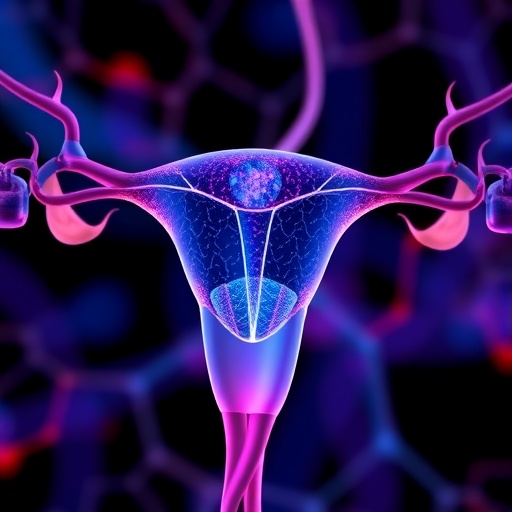Scientists shed light on how the magnetic properties of 2D interlayers can enhance spin accumulation effects in thermoelectric heterostructures

Credit: Macrovector on Freepik
Thermoelectric materials, which can generate an electric voltage in the presence of a temperature difference, are currently an area of intense research; thermoelectric energy harvesting technology is among our best shots at greatly reducing the use of fossil fuels and helping prevent a worldwide energy crisis. However, there are various types of thermoelectric mechanisms, some of which are less understood despite recent efforts. A recent study from scientists in Korea aims to fill one such gap in knowledge. Read on to understand how!
One of these mechanisms mentioned earlier is the spin Seebeck effect (SSE), which was discovered in 2008 by a research team led by Professor Eiji Saitoh from Tokyo University, Japan. The SSE is a phenomenon in which a temperature difference between a nonmagnetic and a ferromagnetic material creates a flow of spins. For thermoelectric energy harvesting purposes, the inverse SSE is especially important. In certain heterostructures, such as yttrium iron garnet–platinum (YIG/Pt), the spin flow generated by a temperature difference is transformed into a current with an electric charge, offering a way to generate electricity from the inverse SSE.
Because this spin-to-charge conversion is relatively inefficient in most known materials, researchers have tried inserting an atomically thin layer of molybdenum disulfide (MoS2) between the YIG and Pt layers. Though this approach has resulted in enhanced conversion, the underlying mechanisms behind the role of the 2D MoS2 layer in spin transport remains elusive.
To tackle this knowledge gap, Professor Sang-Kwon Lee of the Department of Physics at Chung-Ang University, Korea, has recently led an in-depth study on the topic, which has been published in Nano Letters. Various colleagues from Chung-Ang University participated, as well as Professor Saitoh, in an effort to understand the effect of 2D MoS2 on the thermoelectric power of YIG/Pt.
To this end, the scientists prepared two YIG/MoS2/Pt samples with different morphologies in the MoS2 layer, as well as a reference sample without MoS2 altogether. They prepared a measurement platform in which a temperature gradient can be enforced, a magnetic field applied, and the voltage difference caused by the ensuing spin flow monitored. Interestingly, they found that the inverse SSE, and in turn the thermoelectric performance of the whole heterostructure, can be either enhanced or diminished depending on the size and type of MoS2 used. In particular, using a holey MoS2 multilayer between the YIG and Pt layers yielded a 60% increase in thermoelectric power compared with YIG/Pt alone.
Through careful theoretical and experimental analyses, the scientists determined that this marked increase was caused by the promotion of two independent quantum phenomena that, together, account for the total inverse SSE. These are called the inverse spin Hall effect, and the inverse Rashba-Edelstein effect, which both produce a spin accumulation that is then converted into a charge current. Moreover, they investigated how the holes and defects in the MoS2 layer altered the magnetic properties of the heterostructure, leading to a favorable enhancement of the thermoelectric effect. Excited about the results, Lee remarks: “Our study is the first to prove that the magnetic properties of the interfacial layer cause spin fluctuations at the interface and ultimately increase spin accumulation, leading to a higher voltage and thermopower from the inverse SSE.”
The results of this work represent a crucial piece in the puzzle of thermoelectric materials technology and could soon have real-world implications, as Lee explains: “Our findings reveal important opportunities for large-area thermoelectric energy harvesters with intermediate layers in the YIG/Pt system. They also provide essential information to understand the physics of the combined Rashba-Edelstein effect and SSE in spin transport.” He adds that their SSE measurement platform could be of great help to investigate other types of quantum transport phenomena, such as the valley-driven Hall and Nernst effects.
Let us hope that thermoelectric technology progresses rapidly so that we can make our dreams of a more ecofriendly society a reality!
###
About Chung-Ang University
Chung-Ang University is a private comprehensive research university located in Seoul, South Korea. It was started as a kindergarten in 1918 and attained university status in 1953. It is fully accredited by the Ministry of Education of Korea. Chung-Ang University conducts research activities under the slogan of “Justice and Truth.” Its new vision for completing 100 years is “The Global Creative Leader.” Chung-Ang University offers undergraduate, postgraduate, and doctoral programs, which encompass a law school, management program, and medical school; it has 16 undergraduate and graduate schools each. Chung-Ang University’s culture and arts programs are considered the best in Korea.
Website: https:/
About Professor Sang-Kwon Lee
Dr. Sang-Kwon Lee obtained a PhD in Electronic Engineering from the Royal Institute of Technology, Sweden, in 2002. He was then first appointed Assistant Professor in the Department of Semiconductor Science and Technology at Chonbuk National University, Korea, in 2002 and subsequently joined the Department of Physics at Chung-Ang University in 2013 as a Professor. He is currently in charge of teaching Modern Physics and Mathematical Physics at Chung-Ang University. His research interests mainly revolve around solid state physics, such as the development and modelling of nanoscale thermoelectric materials and devices. He works on nanobiotechnology–such as nanobiological semiconducting sensors and cancer cell characterization through devices such as nanowires–microfluidics, and microelectromechanical systems. Currently, he is also interested in working on valley-related effects, such as the valley-Nernst effect, valley-Hall effect and various new Seebeck effects for energy harvesting applications in his quantum transport research lab at Chung-Ang University. He has over 140 publications to his name.
Media Contact
Seong-Kee Shin
[email protected]
Original Source
https:/
Related Journal Article
http://dx.





